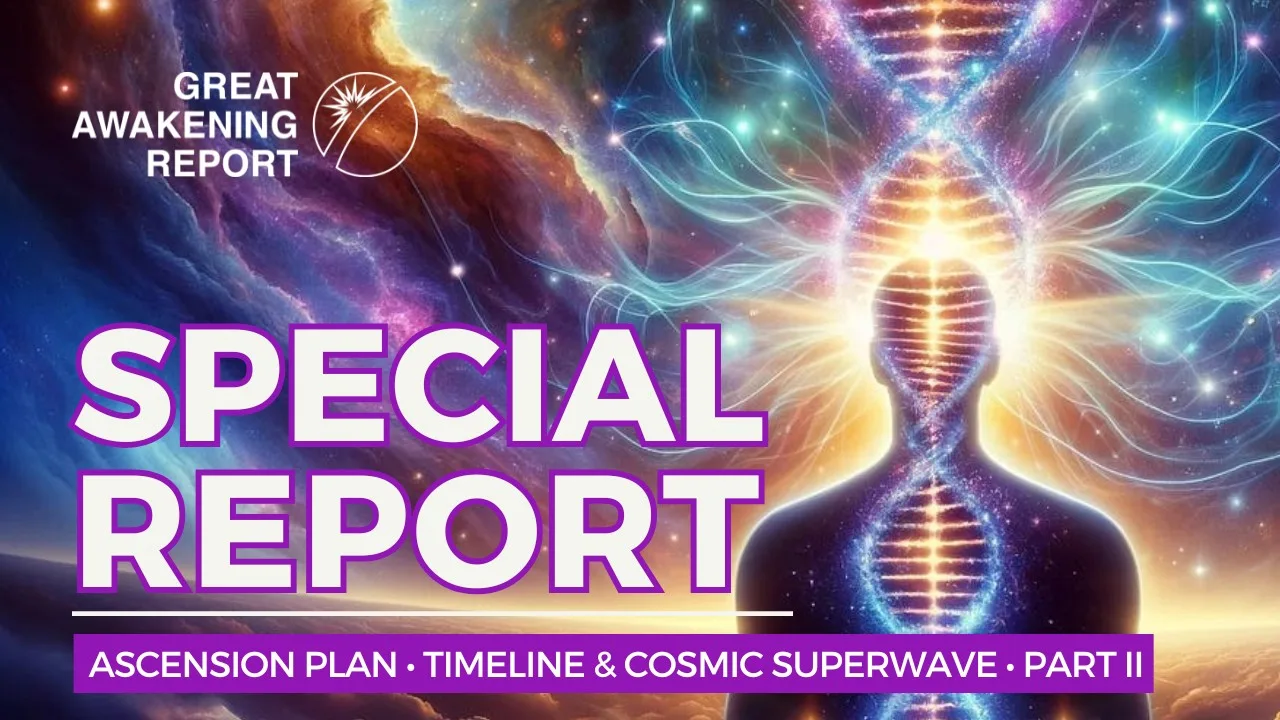Introduction to Advanced Alien Civilizations
The search for advanced alien civilizations has captivated humanity for centuries, leading to a multitude of theories and perspectives grounded in science and speculation. One of the most notable frameworks for understanding the potential existence of extraterrestrial life is the Drake Equation, formulated by astronomer Frank Drake in 1961. This equation estimates the number of active, communicative extraterrestrial civilizations in the Milky Way galaxy based on factors like star formation rates, the fraction of stars that may host planets, and the likelihood of those planets developing life. While the exact numbers for many parameters remain uncertain, the equation serves as a foundation for astrobiology and the search for extraterrestrial intelligence (SETI).
A significant perspective comes from the Fermi Paradox, which questions why, given the vastness of the universe and the seemingly high probability of intelligent life, we have yet to detect any signs of such civilizations. This paradox poses several hypotheses, including the idea that advanced civilizations might be self-destructive or perhaps they are intentionally avoiding contact with us due to the non-interference principle, reminiscent of concepts found in science fiction narratives like the Prime Directive from Star Trek.
Recent scientific advancements have introduced concepts such as the Great Filter, suggesting that there might be significant barriers in the evolutionary process that prevent intelligent life from advancing to a communicative stage. This could mean that many civilizations either do not exist or tend to self-terminate before they can make contact.
Moreover, the study of exoplanets has exploded in recent years with missions like Kepler and the Transiting Exoplanet Survey Satellite (TESS), revealing countless planets in the habitable zones of their stars. The potential for life on these planets is being assessed through continuous research and observation of their atmospheres for biosignatures—chemical indicators of life. The ongoing advancements in AI and astroengineering further allow scientists to analyze and interpret vast amounts of data from these celestial bodies, adding another layer to the search for extraterrestrial intelligence [NASA].
In conclusion, the quest to find advanced alien civilizations is a multifaceted exploration that encompasses mathematical modeling, scientific discovery, and philosophical inquiry, making it a rich field of study that continues to evolve as our understanding of the universe expands. For related insights on consciousness and collective awareness that may coincide with the search for intelligent life, visit our article on the Great Awakening Report regarding collective consciousness.
The Search for Extraterrestrial Intelligence (SETI)
The search for extraterrestrial intelligence (SETI) employs a variety of sophisticated methods and technologies to detect potential signals from alien civilizations. One of the primary techniques involves the use of radio telescopes, which scan the cosmos for narrow-bandwidth radio signals specifically aimed at unusual frequencies. The idea is that if alien civilizations are attempting to communicate, they might use radio waves analogous to our own technologies.
The Allen Telescope Array (ATA) in California is a prime example of such an initiative. This facility features numerous small telescopes that operate in parallel, increasing the chances of capturing even faint signals from distant stars. It is designed to monitor multiple star systems simultaneously, allowing researchers to cover vast areas of the sky efficiently.
In addition to radio signals, SETI researchers also utilize optical telescopes in a technique known as optical SETI. This approach searches for brief laser pulses, potentially sent by extraterrestrials, which would appear as spikes of light in the data gathered from extensive sky surveys. The Laser Interferometer Space Antenna (LISA) project is one such initiative aiming to detect gravitational wave signals that could indicate advanced technologies at play.
Furthermore, machine learning algorithms have become increasingly important in SETI research, helping to sift through the enormous amounts of data collected by these telescopes. These algorithms can identify patterns that may suggest artificial signals, making the detection process more efficient and accurate.
The application of multiple detection methods, combined with advances in technology, has significantly improved the odds of discovering extraterrestrial life. Each technological advancement not only enhances the sensitivity and specificity of detections but also broadens the scope of the search, providing a deeper understanding of our universe.
Potential Characteristics of Advanced Civilizations
Advanced alien civilizations are often theorized to exhibit several distinct characteristics, particularly in the realms of technology and societal structures. One potential feature is their technological sophistication, which could far exceed our current understanding. For instance, they might possess advanced artificial intelligence systems capable of decision-making and resource management that surpass human capabilities, akin to platforms using AI to optimize farming practices by integrating data from multiple sources for enhanced productivity and sustainability [Farm Progress].
Furthermore, these civilizations may demonstrate superior data management techniques, enabling them to efficiently gather, validate, and utilize vast amounts of information in complex environments. This is reminiscent of technologies used in mining, where data solutions combine automation with advanced management practices, enhancing decision-making under challenging conditions [Australian Mining].
In terms of societal structure, advanced civilizations may showcase intricate social systems that prioritize cooperation, sustainable resource management, and possibly even collective decision-making processes, leveraging technology to facilitate effective governance and societal well-being. Such structures could lead to enhanced cultural and intellectual pursuits over imperialistic tendencies, creating societies that are more inclusive and equitable.
Overall, the exploration of advanced civilizations raises questions about the potential for human-like creativity, innovation, and ethical governance in extraterrestrial societies.
Communication with Alien Species
Communication with potential alien civilizations presents a multitude of possibilities, each influenced by unique biological, technological, and environmental contexts. Advanced civilizations may utilize various forms of communication that surpass our current understanding, including electromagnetic signals, chemical signals, or even biological means like bioluminescence or pheromones.
One prominent avenue explored by scientists is the use of radio waves, a method that humanity has largely employed since the advent of radio astronomy. The Search for Extraterrestrial Intelligence (SETI) projects primarily focus on seeking narrow-bandwidth radio signals, which would indicate artificial origins. For instance, the Wow! signal, detected in 1977, remains one of the most intriguing candidates for potential alien communication, though its source has never been identified.
In addition to radio signals, optical communication through light signals is being considered. This includes both traditional laser communication and more advanced concepts like communication via pulsed light that can be detected across interstellar distances. The Breakthrough Starshot initiative aims to develop spacecraft capable of traveling to other star systems using light sails propelled by powerful Earth-based lasers.
However, human interpretation of alien signals faces numerous challenges. First, the vast differences in environmental conditions, evolution, and technology between us and other civilizations can result in misinterpretation of the signals. For instance, an alien civilization might communicate through multi-dimensional signals or biological processes that humans cannot easily perceive [Scientific American].
Furthermore, technical limitations also hinder our abilities to decode potential messages. The development of advanced algorithms capable of distinguishing significant signals from ambient cosmic noise is crucial for effective signal interpretation, as noted by the research trends in modern data analysis [Farm Progress].
In conclusion, while the endeavor to establish communication with extraterrestrial civilizations is fraught with complexities, the potential discovery of advanced forms of intelligent communication remains one of humankind’s most profound explorations. For more related insights on technological advancements in communication and the associated challenges, you can check further articles on the Great Awakening Report.
The Role of Dyson Spheres and Megastructures
Dyson spheres and other theoretical megastructures represent a significant leap in the energy consumption capabilities of advanced civilizations, categorized by the Kardashev scale. A Dyson sphere, proposed by physicist Freeman Dyson in 1960, is an enormous structure designed to capture a star’s energy output, potentially allowing a civilization to utilize up to 100% of the star’s energy. This contrasts sharply with current human energy consumption, which is only a minuscule fraction of the Earth’s available energy resources [Scientific American].
There are various designs proposed for Dyson spheres, ranging from a solid shell to a swarm of solar collectors orbiting the star, collectively referred to as a Dyson swarm. Each design implies colossal engineering efforts and advancements in materials science. Sophisticated megastructures like these suggest not only immense capabilities for energy harvesting but also the potential for interstellar expansion, supporting large-scale habitats beyond planetary systems [Live Science].
On the Kardashev scale, which ranks civilizations based on their energy consumption, the construction of such megastructures evidences a shift from Type I civilizations (harnessing all energy available on their home planet) to Type II (using energy on the scale of their entire star system) [MIT Technology Review]. Thus, the practical ability to create Dyson spheres indicates a profound transformation in societal structure, technological advancement, and interstellar ambitions, showcasing the potential for sustainable energy consumption that could foster further development across the cosmos.
Potential Interstellar Travel Technologies
Advanced civilizations may leverage several theoretical technologies for interstellar travel, particularly warp drives and wormholes, which are deeply rooted in our understanding of physics.
Warp Drives: One of the most popular concepts is the Alcubierre Warp Drive, proposed by physicist Miguel Alcubierre in 1994. This theoretical method suggests expanding space behind a spacecraft and contracting it in front, effectively allowing the ship to move faster than light without violating the laws of physics. The fundamental principle relies on the manipulation of spacetime, creating a ‘bubble’ that can carry a spacecraft across vast distances almost instantaneously [Science Alert]. However, this concept remains speculative due to the immense amounts of energy and exotic matter required.
Wormholes: Another intriguing possibility for interstellar travel is wormholes, which are theoretical passages through spacetime that could create shortcuts between distant points. These concepts stem from general relativity, with physicists such as Kip Thorne suggesting that if such structures exist, they could allow for effective travel across light-years [Space.com]. However, practical implementation poses significant challenges, including the stability of the wormhole and the energy requirements to create or sustain it.
Other Concepts: Technologies like the Bussard Ramjet, which proposes collecting interstellar hydrogen to fuel a spacecraft’s nuclear fusion engine, and solar sails utilizing the pressure of light from stars, are also explored [ESA]. Each of these technologies remains in the theoretical stage, showcasing the vast complexities and hurdles that advanced civilizations would need to overcome to achieve interstellar travel.
With ongoing research, the dream of exploring beyond our solar system continues to inspire both scientists and enthusiasts alike as we ponder the possibilities of what lies among the stars.
The Impact of Discovering Alien Civilizations
The discovery of advanced alien civilizations would usher in profound sociocultural and philosophical transformations for humanity. From a sociocultural perspective, evidence of extraterrestrial life could reshape belief systems, societal norms, and cultural practices. It would challenge humanity’s position in the universe, prompting a reevaluation of religious and existential beliefs. Historical paradigms that center human experience as the pinnacle of evolution would likely be scrutinized, leading to a potential shift in worldview. This encounter may necessitate a new narrative about our place in the cosmos, fostering a sense of shared identity among humanity as we recognize our interconnectedness with other intelligent beings.
Philosophically, the implications are equally significant. Questions regarding the nature of consciousness, intelligent life, and the ethical treatment of extraterrestrial entities would come to the forefront. Are these civilizations sentient beings deserving of respect, or mere subjects to be studied? The realization that humanity may not be unique in its consciousness could spark a renaissance of thought, influencing ethical theories and moral philosophies around rights and responsibility towards other life forms.
Moreover, the potential repercussions on collective psychology could be immense. Some might experience existential anxiety while others could find inspiration in the possibility of collaboration with advanced beings. This experience could illuminate the need for a unified global approach to existential challenges, highlighting themes of cooperation and harmony over conflict. Such a profound encounter might accelerate movements towards global peace, sustainability, and technological advancement as humanity seeks to understand its broader context.
The sociocultural and philosophical implications of discovering alien civilizations extend beyond mere fascination; they represent a pivotal turning point for human evolution and consciousness. For more on interconnectedness and collective identity, see our piece on powerful conversations in increasing societal awareness.
Future Prospects and Theories
Astrobiology is on the cusp of transformative advancements, driven by the integration of artificial intelligence, innovative technologies, and a deeper understanding of extreme environments. As we continue to explore the cosmos, the quest for extraterrestrial life is becoming increasingly sophisticated. The development of tools that can analyze vast amounts of data from astrobiological missions is essential, as evidenced by platforms that combine data management and AI, enhancing our capability to discern potential biosignatures across different celestial bodies [Farm Progress].
The evolution of our understanding of the cosmos has been marked by paradigm shifts, facilitated by missions to Mars, Europa, and beyond. Research suggests that the potential for life exists not only on distant exoplanets but also within our solar system, particularly in subsurface oceans, such as those found on Europa. Emerging technologies that automate data collection from these missions promise to enhance reliability and accuracy in managing astrobiological data [Australian Mining].
Moreover, the implications of finding advanced alien life extend beyond scientific curiosity; they pose profound questions about humanity’s place in the universe. As we advance our exploration capabilities, the intertwining fields of astrobiology and cosmic evolution will likely redefine our perceptions of life, intelligence, and connection within the vastness of space [BCIS].
In conclusion, the future of astrobiology holds significant promise, fostering an environment of innovation that aligns our technological prowess with the age-old question: Are we alone in the universe? The ongoing quest not only seeks answers but also inspires a continuous dialogue about the nature of life and our relationship with the cosmos. For further insights into this evolving field, consider exploring our articles on related topics, including the soul’s connection to consciousness and the impacts of spirituality on our understanding of the universe.
Sources
- SETI Institute – Drake Equation
- Scientific American – Fermi Paradox
- MIT Technology Review – Great Filter
- NASA – TESS & Cheops Missions
- Australian Mining – Data Management in Mining
- Farm Progress – Technology in Farming
- Breakthrough Initiatives – Starshot
- Scientific American – Alien Message
- Science Alert – Warp Drive
- Space.com – Wormholes
- ESA – Interstellar Probe
- Scientific American – Dyson Sphere
- Live Science – Advanced Civilizations
- MIT Technology Review – Kardashev Scale
- BCIS – Construction and Infrastructure
Share This Report
Have questions?
At Great Awakening Report, we are dedicated to supporting your journey toward truth and enlightenment through our specialized Coaching and Consulting services.
Coaching Services: Our coaching programs are designed to guide you through personal awakening and transformation. We offer personalized sessions that focus on expanding consciousness, uncovering hidden truths, and fostering spiritual growth. Our experienced coaches provide the tools and insights necessary to navigate your path with clarity and confidence.
Consulting Services: For organizations and individuals seeking deeper understanding and strategic guidance, our consulting services offer expert analysis and solutions. We delve into areas such as global transitions, alternative news insights, and consciousness studies to provide comprehensive strategies tailored to your unique objectives.
Embark on a transformative journey with our Coaching and Consulting services, and unlock your highest potential. To learn more and schedule a session, visit our Coaching and Consulting pages.
Thank you
Thank you to our subscribers and readers for your continued support and dedication to truth and awakening. Your encouragement, engagement, and belief in our mission make everything we do possible. Together, we are expanding awareness and helping illuminate the path forward.
If you would like to further support the Great Awakening team and our ongoing efforts to share insight, knowledge, and truth, you can DONATE HERE.
With deep gratitude,
– Great Awakening Team
DISCLAIMER: All statements, claims, views and opinions that appear anywhere on this site, whether stated as theories or absolute facts, are always presented by The Great Awakening Report (GAR) as unverified—and should be personally fact checked and discerned by you, the reader.Any opinions or statements herein presented are not necessarily promoted, endorsed, or agreed to by GAR, those who work with GAR, or those who read or subscribe to GAR.Any belief or conclusion gleaned from content on this site is solely the responsibility of you the reader to substantiate.Any actions taken by those who read material on this site are solely the responsibility of the acting party.You are encouraged to think for yourself and do your own research.Nothing on this site is meant to be believed without question or personal appraisal.
COPYRIGHT DISCLAIMER: Citation of articles and authors in this report does not imply ownership. Works and images presented here fall under Fair Use Section 107 and are used for commentary on globally significant newsworthy events. Under Section 107 of the Copyright Act 1976, allowance is made for fair use for purposes such as criticism, comment, news reporting, teaching, scholarship, and research.
COMMUNITY GUIDELINES DISCLAIMER: The points of view and purpose of this video is not to bully or harass anybody, but rather share that opinion and thoughts with other like-minded individuals curious about the subject.










